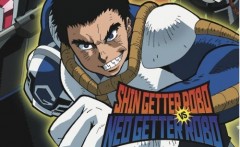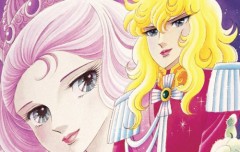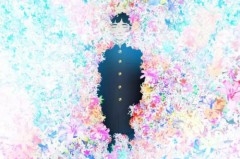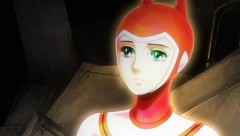![Robotech]()
Robotech
A truly remarkable set for general classic collectors and anime fans alike.
What They Say:
ROBOTECH is a sweeping science-fiction anime epic of humans defending their home world against alien domination. The saga is told through the eyes of characters caught up in a series of wars that erupts when a mysterious spacecraft crashlands on Earth at the turn of the millennium. The secrets of alien knowledge aboard this vessel were unlocked, leading to the development of “Robotechnology” and the creation of a vast arsenal of robotic “mecha” to defend the Earth against the alien threats that would eventually strike to lay claim to the mysterious power source known as “protoculture.” Carl Macek’s groundbreaking sci-fi epic has enthralled audiences for decades since first appearing on American television in 1985. One of the first-ever anime imports, this saga spans several generations of mankind’s fight for freedom. ROBOTECHr: THE COMPLETE SET includes the remastered versions of all 85 episodes from the three Robotech Wars: THE MACROSS SAGA, THE ROBOTECH MASTERS and THE NEW GENERATION. It also includes the ROBOTECH: 2-MOVIE COLLECTION featuring the fan favorite – THE SHADOW CHRONICLES – and the latest film, LOVE LIVE ALIVE, as well as a bonus disc. Take home this all-inclusive collectable set every fan must have
The Review
Packaging:
There’s a slipcase silver-themed cover box with a veritech pilot (presumably the blue-haired bespectacled Max Sterling of the Macross Saga) on the front and content details with a picture of a cyclone rider from The New Generation on the back. Inside the box is a single plastic case with the same info as well as all 20 DVDs . The case stacks each series up in sections and is a little cumbersome to get to individual discs one might be searching for. , but it’s definitely sturdy to say the least.
Video:
The Macross Saga benefits from the restoration work done on the Japanese series restoration done by Shin Kurokawa of AnimEigo fame. The picture is bright with Red and Blue hues noticeably more vibrant than any previous release. The Robotech Masters and New Generation segments also look bright but are just a tad less crisp. Still there’s pretty good video quality here on their remasters. I’ll talk a little more on the video aspect in the ‘Content” section.
Audio:
The audio is pretty loud and hard hitting in the effects area. Dia log is still easy to hear and no distortions were present. There are some aspects though I’ll have to talk about in the “Content” section due to this being a conversion instead of a straight translation.
Menu:
Each menu is tailored with characters and color schemes from their respective story segments with the Robotech opening theme in the background. The individual episodes have a white cursor clearly indicating links to features as needed.
Extras:
Over the years, there have been different sets of extras added to each collection for Robotech as different companies have taken responsibility for distributing the series. Thankfully, the additions have been cumulative through each collection. As the “Complete Set” represents the most extras in one place to date, I’ll be largely looking at their presence on this set only and not the previous ones.
This is a bit difficult in a way though as it’s a little hard to tell what’s an extra and what’s content in this set. I will say there’s 4 discs of extras here which are truly exhaustive, in addition to some of the content on the Love Live Alive and Shadow Chronicles DVDs . There are a lot of short videos including trade show promos, art galleries, commercials for 80s toys (IE vertiechs, action figures and cyclones) and trailers for recent movies. I have to say the “Women of Robotech” commercials are the funniest things in the world as they the female characters as dress up dolls, and the spots are just plain goofy when taken out of context. There are also some pretty cool behind the scenes documentaries of both 80s and 2000s efforts which make one appreciate the production process and how much energy Carl Macek, the Agrama family and crew of Harmony Gold put into things.
There’s also the Japanese openings and closings to Super Dimension Fortress Macross, Super Dimension Calvary Southern Cross, and Genesis Climber Mospeda, the three shows merged into Robotech (More on these below). The deleted scenes from the different versions of each series are interesting to note. Also, there are different pilots and TV episodes to be discussed in the ‘Content’ section. But suffice it to say there’s a lot of material here that is very educational and entertaining.
Content: (please note that content portions of a review may contain spoilers):
Recently, I saw a facebook post noting that 29 years have passed since Robotech premiered on TV this month. I got to see it a year after that as it didn’t start in my area until then. For many kids like myself, all animation works were cartoons to entertain us in the morning, afternoons and keep us out of our parents’ hair. Every character had the same design style with about 6-8 primary colors present while wholesome family values were shown to us in every episode with characters going on non-fatal adventures alongside the toy commercials and occasional advertisements for Disney movies (or theatrical versions of He Man /She-Ra, Transformers, Go-Bots and the like). There was no continuity between episodes of anything. However, there were these weird looking shows such as Speed Racer and Battle of the Planets which had unusual facial shapes, fantastic weapon designs and more detailed background artwork. Later other shows such as Voltron and Star Blazers had a similar style but with elements of a progressing story besides which started to keep my interest.
So when Robotech started broadcasting, it was a totally new experience for me. There were cool weapons and toys (one of which looked like my Transformers jet I was playing with repeatedly) and big battles like the ones on G.I. Joe. However unlike that series, there were other things really keeping my interest such as the fact people acted like people with real emotional reactions to various situations, some of which were very adult in nature. Occasionally, romantic scenes and alcohol use were present. Also, in a complete contrast to the G.I. Joe series, characters were being killed off instead of always parachuting out of planes or being stunned and sent to some other dimension. We were relating to these characters as people who could potentially go into combat (or just be sitting around in a command center) and potentially not be seen in the following episodes because they were dead. For kids growing up in the 80s and 70s, these were strange elements to see in a cartoon, shown only in live movies and some comic books instead. Equally compelling were romantic relationships (some interracial) which were evolving through the course of the show. In time, after finding the book Robotech Art 1, I got to read about the show’s origins and ending (as it was cancelled with 6 episodes left. Damn you, KPLR-11!) I’d learned these elements (along with the art style, cool toys, etc) were very prevalent in Japanese animation and been produced quite regularly since the 60s in shows I’d vowed to catch up on over the years. It was also eye opening to know there were more adult-ish versions of Voltron (Golion / Dairugger XV) Battle of the Planets (Science Ninja Team Gatchaman) and the like that I needed to hunt down and see for the first time. I imagine other kids alive at that time who eventually became anime fans had a similar gateway experience.
Over the decades, the landscape for such animation has been changed drastically; Japanese animation is commonly referred to as ‘anime’ and shown frequently on American television. Some recall seeing it on Sci-Fi Channel or in syndication, others have their first experiences watching shows regularly on Adult Swim / Toonami or occasionally on premium cable channels. Though animation is still largely seen as something for children with as few adult elements as possible, there are still those who see high brow humor on The Simpsons, SouthPark or similar nighttime fare. There are still other American shows such as Avatar The Last Airbender and Justice League Unlimited with intelligently written progressive storylines. Meanwhile, kids and adults have the opportunity to see anime on line or buy home releases at various stores or have had the opportunity see theatrical films from Akira to The Wind Rises at the theaters thanks to companies forming to import and find profit in selling unaltered anime to American markets. Also, various anime-focused conventions have been organized across the country for fans to celebrate their favorite shows in all kinds of ways.
In that time, the kids who were Robotech fans have had a chance to grow up and have kids of their own who’ve grown up in this environment. They can see more of the potential that animated storytelling can have more readily than the folks of my generation or earlier had a chance to see. The initial anime shows that were re-written as footage for the Robotech storylines (Macross, Southern Cross, & Mospeda) have since been released in the U.S. in unaltered boxsets with Japanese languages and English subtitles. The version of Robotech I’m writing about here in this box set is actually different than the one I saw on TV all those years back. So in doing this review, two questions have to be answered for people purchasing the collection: is Robotech still worth watching and have the people behind the set (Harmony Gold, Lionsgate, A&E Networks) created a worthwhile product here?
To answer these, we have to look at the Robotech stories presented in this box set individually, beginning with the 85 episode serial. Robotech is the story of a 3 part war. The first part, The Macross Saga, starts with the Earth in a time of global civil war, until an alien spaceship crashes on Earth, and humanity unites to developing the technologies within to advance and be prepared should the owners of the space craft come looking for it. Ten years later, a young pilot named Rick Hunter flies to the island crash site where a city now thrives around the restore spacecraft, now known as the SDF-1. He’s there to see his “big brother” Roy Fokker, who leads the new veritech fighter plane squadron (known as Skull Squadron) for Earth’s defense forces. That same day an alien race of giants called The Zentradi come attack from space to retrieve the ship. The commander of the SDF-1, Captain Gloval, decides to try and take the battle to the enemy in space by using what’s known as a Fold System (a method of space war travel) to jump into space. The crew aims to take the ship near the moon; but instead warp to the planet Pluto. In the process, the city (filled with inhabitants locked in battle shelters) is transported accidentally with the ship. The fold system engines disappear en route so everyone has to take the long way home using conventional engines. Along the way, Rick becomes a veritech pilot (at first accidentally to rescue a pretty girl he meets named Lynn Minmay, and then later at the urging of both Minmay and Roy to join the defense forces.) While working under the command of the executive officer Lisa Hayes, Rick grows into an effective soldier, and deals with Minmay’s seemingly fickle affections. Minmay herself becomes a big singing star for the city inhabitants, who’ve rebuilt their lives aboard the SDF-1. Meanwhile, the Zentradi under Commanders Breetai and Exedore, continue to try and capture the ship, and understand the strange customs they see taking place aboard it (particularly the concepts of fictional entertainment and male / female interaction), while their Supreme Commander Dolza sets his sights on a now known bigger prize: Earth itself.
About 15 or so years later, we’re introduced to Dana Sterling, the daughter of two of The Macross Saga’s supporting characters, Max and Mirya Sterling. The first Robotech War as it’s now known, devastated much of the Earth and decimated humanity’s population. The SDF-1 is a crashed junkpile, filled with secrets of Robotechnology including a plant that generates the energy source ‘Protoculture’ that powers the transforming mecha soldiers use. Many people live in MonumentCity, near the SDF-1. Soon, a group of humanoid aliens known as The Robotech Masters come in massive island-sized spacecraft to retrieve the ship’s secrets since The Zentradi have failed apparently. Dana is a bit of a misfit in the Earth military but proves capable as a lieutenant commanding the 15th Tactical Attack Corps, piloting a set of transformable tanks. She comes to have feelings for one of the Masters’ pilots, named Zor, who has odd secrets of his own to explore over the course of the series. Meanwhile, Supreme Commander Leonard believes the only way to survive this second war is to throw his forces into repeated attacks against technically superior and seemingly invincible forces. His second in command, General Emmerson (whose godson Bowie works for Dana) believes more careful planning and strategy are needed against this new enemy, and he becomes totally at odds with his leader. The Masters themselves become increasingly desperate over the course of the series as they whisper about a fearsome alien race known as The Invid who likely want the Protoculture as well.
The conclusion of this segment leaves Earth ripe for invasion. Dana leads some soldiers in search of her parents, who themselves left with the survivors of the Macross Saga in search of other alien races to contact and potentially make peace with. Meanwhile, the Invid come and quickly overwhelm the depleted Earth military forces who are battered after fighting off the Robotech Masters. The Invid turn Earth into a slave colony to harvest Protoculture. A few years later, the expeditionary forces commanded by Admiral Rick Hunter are sent to invade and reclaim the Earth. This beginning of the third Robotech War focuses on Lt. Commander Scott Bernard of the Mars Division attack forces. Although there are hundreds of human soldiers, The Invid are ready and Scott is the only one to survive the first wave attack. His fighter plane falls to Earth while his fellow soldiers (including his fiancé aboard one of the battleships) are wiped out. Scott vows to find the Invid’s headquarters Reflex Point, and get the Earth ready for Adm. Hunter’s main attack. Along the way, he meets several folks who become his guerilla team and family of sorts, wanting to also get rid of these giant crab-like aliens dominating the planet. This group includes Rand the scavenger, Rook the loner with her own weaponry, Annie the red-headed orphan girl, a huge mechanic named Lunk, and Lancer, an effeminate soldier who has survived by disguising as a female singer called Yellow Dancer.
So you have a sprawling tale of sci-fi and war, with elements very much in the traditional anime genre known as “space opera”. Does the story hold up nearly 30 years after initial release? For the most part, I say it does. There are those who say that since the individual anime have been released and times are different now, the show is no longer valid entertainment. To that end, I had a debate with a female friend over the use of music and culture shock, both accidental and intentional, as themes throughout the show. These elements still feel solid in moving the story along and helping to develop characters in some respects. Also, given the imaginative use of such things, I find they’re no less solid for a fighting tactic as alchemy, powering up fireballs, and rappelling to fight giants have been in anime. The use of music to move a story forward feels more like a trend that was popular in the 80s on anime like Megazone 23 and Bubbegum Crisis , but it’s still entertaining in this day and age.
Now Robotech wasn’t entirely perfect in this aspect, per se. Through the initial stages of her singing development, it gets repetitive to hear Minmay sing “To Be In Love” again and again when it’s clear the character should be (or in the case of the Japanese series, has been) working on different songs as the show progresses. Luckily, after a point late in the show, she does present different material and the singing scenes more bearable. Other characters (mostly male) do some singing and have mixed results during the Second and Third Robotech Wars.
This brings me to the topic of voice acting. For folks in the modern era who think occasionally some actors do decent or sometimes not-so great vocal work, I have to say you’re lucky as many people in those jobs perform rather well, and / or have competent directors guiding them. From the 90s and 80s on back, many talents were directed to be incredibly high pitched and whiny or speak unnaturally low to emulate the goofy dialog handed to them, sometimes with terrible background music, or at least music that just would never stop. I will definitely say on the whole, the talents in Robotech did very good work, as the ADR was generally age appropriate for the actors’ characters. There were a lot more adults in older shows than there are now, so there aren’t as many people trying too hard to sound like teenagers (while the ones voicing teen characters don’t sound bad at all, actually) and delivery is more believable. Folks such as Tony Oliver, Reba West,Greg Snegoff, and Mike McConohie all sound natural in their roles. Also, Robotech showed characters actually can have memorable conversations with no background music playing, adding to the feel of the moment at hand.
Recall earlier though I said this wasn’t the same version of Robotech I grew up on. That’s in reference to a newer version having been released after ADV Films released the entire series as originally broadcast. Afterward, they released what’s known as “Robotech Remastered: Extended Edition” which combined the original Robotech vocal performances with the footage from their segments Japanese components (including footage that had been deleted due primarily to being too adult for kids television). The foley of the engines and weapons were replaced entirely with new effects though, while the Japanese effects were omitted entirely. Also, each segment had its own set of opening credits with footage from their given show as opposed to the original version which had amalgamated footage in both the opening and closing sequences. This is the version in found in the boxset, and it’s most different for me as an old-school viewer, since the new sounds took a bit of getting used to while watching this go around. To someone who hasn’t seen the previous version, there shouldn’t be as much of an issue here, and I myself got used to the newer audio eventually. Still, although it’d take a bit of an effort to go and re-synch the older audio with the extended footage, I can’t help wishing my childhood version were part of this set, even though I did pick up the original versions on DVD some years back.
Going back to the story aspect for a bit, while most of it was pretty solid, there were aspects that didn’t work at all. In rewriting the scripts so that Robotech could play out congruently with the footage at hand, there weren’t really too many changes to the characters themselves, or to the story that much, for both Macross and The New Generation. The biggest difference in Macross was in changing the definition of ‘protoculture’ from an ancient race in the Japanese series to an energy source in Robotech. For the New Generation, there’s relatively less change other than a penchant to referring to the events of the previous two wars. However, for Southern Cross’s transition, there are certain events over the beginning of the show introducing the Robotech Masters to Earth and the dialog (and narration) can’t seem to determine if humanity knows who the Masters are or if humanity just knows aliens are coming to invade. There’s very inconsistent writing in the first few episodes here. Also, there’s an episode entitled “Dana’s Story” that was created as a transition piece from The Macross Saga in which Dana tells Bowie about how her parents met. The editors used footage from both shows to tell this story, which was fine, but then later in the episode, there’s a space battle which uses fighter planes that are clearly not introduced until much later in the series, thus creating a bit of a headscratcher for the viewer. Still, outside these elements, the characters develop decently through the show and of the three Robotech stories, this one presents the most violent content showing what happens to ground troops in a war and some pretty unpleasant scenes do take place. Also, Zor’s re-write isn’t too bad considering how he eventually figures into things.
Moving beyond the original series, we come to extra episodes included here. The original dub for Genesis Climber Mospeda episode 1 is on here as the first episode retained the characters Japanese names and is presented with no video enhancement, so the footage still has its vintage look. It’s rather fun to watch from a historical perspective. Equally fun is watching the Macross pilot that was sent to TV stations when Harmony Gold first proposed showing the series. Keep in mind this was done prior to Robotech so while the actors are the same, their vocal cadences are a bit different, as are their the characters’ name changes. There’re apparently two versions in this set. One has the first episode and the masthead altered for American language. The other is completely unaltered with all footage retained from the version and 3 episodes contained here. Again it’s interesting to see how these shows evolved into Robotech eventually as a sort of evolutionary missing link.
On the opposite end are a couple failed efforts at expanding the story. First there’s Robotech: The movie, or Robotech: The Untold Story as it was to be called. This was a movie primarily using footage from Megazone 23 combined with re-edited footage from Southern Cross to create a new side story. However, the project was shelved due to poor reception at a test screening in Dallas, and never seen in the U.S. again. Due to the fact Megazone 23 is licensed with another company, no footage from it could be used for this set so only the Southern Cross re-edits are presented here, and… well, they just aren’t very good to watch, to be honest. It’s nice to see them here for reference though. Along that same vein is the pilot for Robotech II: The Sentinels, which was supposed to be a brand new series with original animation detailing what happened when the surviving characters of The Macross Saga went into space and ran into The Invid themselves. However, due to various disagreements and lack of funds, only the first three episodes were ever produced, with the rest of the story fleshed out in comics and novels eventually. The pilot presented here is ok, though it’s weird seeing the characters look so different from the original show.
The 2006 original movie Robotech The Shadow Chronicles though was a successful film for Hamony Gold that actually was a pretty decent work in its own right. The story by Thomas J. Bateman, Steve Yun and Tommy Yune initially starts during the final New Generation episodes “Dark Finale” and “Symphony of Light”. The focus characters are Maia Sterling (Max and Mirya’s other daughter who now leads the Skull Squadron) Vince and Jean Grant (Bowie’s parents) and Marcus Rush (brother of Scott Bernard’s fiancé). They work under the command of General Reindhard aboard the SDF-4, which has begun final attack preparations with the main Expeditionary Forces at Earth’s moon. Prior to this, they teamed up with a race called The Haydonites (presumably during the Sentinels storyline) and acquired a stealth technology that makes Veritech fighters invisible to The Invid. Reindhard coordinates efforts with the ground forces attacking the Invid’s headquarters and decides that if all else fails, he will use Neutron-S missiles that will likely destroy all life on Earth (Invid and human alike). As the space battles bflare up, Reindhard gets a transmission from Scott Bernard on Earth (with Greg Snegoff returning to reprise the character) who says the ground battle is going poorly before he’s cut off… The animation is handled by DRMovie (who worked on Macross Plus and Yukikaze) and is a really good mix of 2D cel and 3D CG techniques, very comparable with animation methods of the time.
Robotech Love Live Alive is also present in this set, and… I honestly don’t know what they were thinking here. It’s said to be a project Carl Macek was working on but never got to finish before his passing. He was probably inspired by the Japanese video Mospeda Love Live alive, but the concept for the Robotech one is totally different. This one basically is a clip show as Lancer thinks about the journey he took with Scott and company to their final battle at Reflex Point. There’s only a couple minutes of new footage at the end to show how the characters’ lives turned out (most notably Lancer’s.) As a stand lone, I don’t think I’d have wanted it, but it’s here for the box set so I’m happy to have it for completeness. The one boon though to come from this is the presence of the Japanese Love Live Alive video on this box set. I’d only heard of it in the back section of Robotech Art 1 but didn’t think I would see it released here. Mospeda Love Live alive is a 50 minute music video collection, somewhat similar to the Robotech version but with completely different execution and pretty cool 80s music, similar to Macross: Flashback 2012 and Bubblegum Crisis: Hurricane Live. The removable subtitles don’t hurt a bit besides, and I have to say “Midnight Rider” is a cool song to rock out to.
In Summary:
I asked earlier two questions. Is Robotech still a good series? I wrote once in a review that a good story remains a good story no matter when it’s told, and I still hold that position after watching this new version of Robotech long after I saw the initial version. Though it’s had some flaws, it’s still a largely well-told space opera with action, romance and character evolution. I’d recommend this set for anyone who wants to watch a good sci-fi show despite the flaws. I also asked if the makers of this set have put together a good product. That answer is a resounding yes. This is an awesome set. I’ve not seen U.S. TV releases that have had the amount of extras this one contains. The retail pricing is around $90 but I’ve seen this available for around $35-$45 in stores and on line. This is one of the best representations of classic American and Japanese television available and is very much a collection I’d recommend grabbing when you can.
Features:
2 New Documentaries (Robotech The Inside Story, The Making of Robotech Love Live Alive), Japanese version of Mospeda: Love Live Alive, Deleted Scenes, Behind the Scenes Featurettes, Alternate Versions of Episodes, Pre-Production Galleries, Rare Promotional Videos and Trailers
Content Grade: A-/B+
Audio Grade: A
Video Grade: A-
Packaging Grade: B+
Menu Grade: A
Extras Grade: A++
Released By: Harmony Gold, Lionsgate, A&E Networks, Content
Release Date: November th, 2013
MSRP: $89.98
Running Time: 37 Hours
Video Encoding: 480i/p MPEG-2
Aspect Ratio: 1.85:1, 16:9 Anamorphic Widescreen
Review Equipment: Panasonic 1080P HDTV, Sony PlayStation3 Blu-ray player via HDMI set to 1080p, Marantz
 Standing beside (or some might say above) great classics about feudal Japan such as Ruroni Kenshin and The Dagger of Kamui, one of the best anime released in the 90s to impact both Japanese and American anime fans is Ninja Scroll. But how does this latest release in the U.S. market fare to prior ones?
Standing beside (or some might say above) great classics about feudal Japan such as Ruroni Kenshin and The Dagger of Kamui, one of the best anime released in the 90s to impact both Japanese and American anime fans is Ninja Scroll. But how does this latest release in the U.S. market fare to prior ones?
































































































































